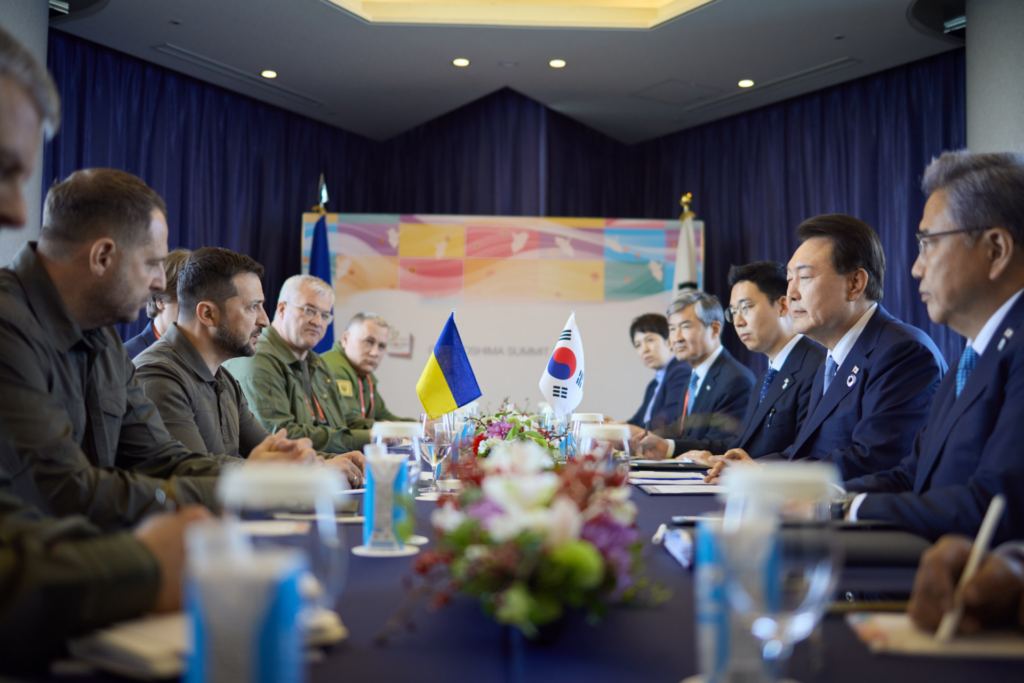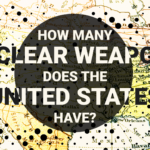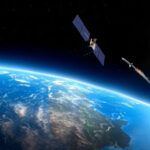Watching Ukraine, South Korea and Japan eye nuclear weapons. Here’s what the US should do.
By Sayuri Romei | July 20, 2023
 Ukraine's President Volodymyr Zelensky and South Korea’s President Yoon Suk Yeol during a meeting as a part of the G7 Summit in Hiroshima City, Japan on May 21, 2023. (Photo courtesy of the Presidential Office of Ukraine)
Ukraine's President Volodymyr Zelensky and South Korea’s President Yoon Suk Yeol during a meeting as a part of the G7 Summit in Hiroshima City, Japan on May 21, 2023. (Photo courtesy of the Presidential Office of Ukraine)
Russia’s invasion of Ukraine in February 2022 has had significant ripple effects on the United States’ allies in the Indo-Pacific. Both Tokyo and Seoul are now asking Washington to be more engaged in the region, with Japanese Prime Minister Fumio Kishida warning in January 2023 that “Ukraine today may be Asia tomorrow.”
The South Korean nuclear discourse seems to have taken a particularly sharp turn since the war in Ukraine started. A February 2022 survey by the Chicago Council on Global Affairs and the Carnegie Endowment for International Peace showed that 71 percent of South Korean respondents supported their country developing nuclear weapons and 56 percent favored the return of US tactical nuclear weapons to the peninsula. This shift in public sentiment was echoed by South Korean President Yoon Suk Yeol. Speaking during a policy briefing in January, he stated that if North Korea’s nuclear threat continues to grow, South Korea might consider building its own nuclear weapons or asking the United States to redeploy tactical nuclear weapons on the Korean Peninsula. President Yoon did try to explain a few days later that his comment was not to be taken as an official policy change, but it came too late: His gaffe had already made a loud impact in the news.
Yoon’s January comment was the first time since the early 1990s, when the United States withdrew its nuclear weapons from the peninsula, that a South Korean president shared such thoughts publicly. Most recently, Seoul Mayor Oh Se Hoon doubled down on the idea, calling for South Korea’s nuclearization during a March media interview. As Carnegie senior fellow Toby Dalton puts it, South Korea “is exhibit A” for recent developments in the international security environment, including Russia’s invasion of Ukraine, China’s rapid military buildup, and North Korea’s mounting provocations.
These recent comments about nuclearization in South Korea may have raised decades-old doubts in Washington about the potential of a classic regional nuclear domino effect: If Seoul goes nuclear, will Tokyo follow suit?
Japan as the “deterrence-fluent ally.” Recent debates about nuclear weapons in Tokyo have been much more contained than in Seoul. Immediately after Russia’s invasion of Ukraine in late February 2022, former Prime Minister Shinzo Abe explicitly suggested on television that Japan should consider a NATO-style nuclear-sharing arrangement. Current Prime Minister Fumio Kishida, however, is more dovish than most of his fellow Liberal Democratic Party members and quickly shot down the idea, calling it “unacceptable.” At least one other former Japanese official also mentioned the importance of debating a nuclear-sharing agreement with the United States since the war in Ukraine began, but there has been no noticeable change in the Japanese government’s nuclear rhetoric or in the public’s attitude.
As neighbors, South Korea and Japan face similar regional threats and are both long-time US allies. But they see their national security in the region slightly differently: South Korea’s main concern remains North Korea, while Japan focuses on China as its main threat. Although Japan’s official stance towards Taiwan and Beijing has not changed, the Russian invasion of Ukraine made Tokyo more vocal and serious about deterring a potential forceful change of status quo by Beijing. Japan is still convinced that China will not abandon its ambitions on Taiwan, and Japan’s new National Security Strategy, released in December 2022, describes China’s current stance as “a matter of serious concern” and “an unprecedented and the greatest strategic challenge.” Prominent political figures in Japan have also recently stated that a Taiwan contingency is a contingency for Tokyo.
Japan and South Korea also differ in how they are engaging in extended deterrence consultations with the United States. In 2010, Japan and the United States established an “Extended Deterrence Dialogue.” Six years later, South Korea and the United States established a similar forum called “Extended Deterrence Strategy and Consultation Group.”
Early iterations of the US-Japan extended deterrence dialogue mainly saw American officials explaining to their Japanese counterparts how deterrence mechanisms worked. But then Japanese bureaucrats from the Ministries of Defense and Foreign Affairs quickly developed a very sophisticated understanding and expertise in deterrence matters. US officials who have been involved with both dialogues often call Japan the “deterrence-fluent ally,” which may come from Japan’s exceptional political continuity and regularity of the biannual dialogue meetings with the United States since it was institutionalized. The US-South Korea dialogue, on the contrary, took a hiatus of nearly five years, only reconvening in September 2022. Although relations between Seoul and Washington seem to be back on track after a remarkable deterioration toward the end of Moon Jae In’s term, President Yoon’s casual statements on nuclearization still caught Washington off guard.
Japan’s nuclear hedging. The arguments against Japan’s nuclearization traditionally include domestic public opinion and the country’s post-World War II pacifist identity, with others also citing technical and financial hurdles, as well as the enormous diplomatic costs that such an endeavor would have. While most of these arguments still ring true, Japan’s nuclear hedging posture has played an important role against nuclearization.
Conservative Japanese politicians have a history of mixed messages regarding the indigenous nuclear option. These messages are intended for different and overlapping audiences. Statements about the constitutional right to possess nuclear weapons exemplify such rhetoric and are partly aimed at keeping Japan’s regional adversaries—especially China—uncertain about their neighbor’s ultimate security intentions. At home, Japan is commonly viewed as a nuclear threshold country, as it has significant latent capabilities due to its highly advanced nuclear fuel cycle technologies.
Japanese officials have used the country’s refusal to develop nuclear weapons despite its technological capabilities in two primary ways: to reassure the public about the security of the nation, while maintaining its moral stance vis-à-vis global peace. On some occasions, Japanese officials’ allusions to a nuclear option were directed to the United States and meant to test its commitment to defend Japan. And pro-nuclear messages have also been directed to the most conservative part of the Japanese public who find inherent value in nuclear weapons, linking them to prestige and leverage in international politics.
Although present throughout the postwar era, this ambiguous posture flourished during the early years of Shinzo Abe’s second tenure as prime minister from 2012 to 2020. His decisively conservative figure sharply contrasts with current Prime Minister Kishida’s core values, a contrast that also explains the recent containment of nuclear rhetoric in Japan.
Likewise, the resurgence of the nuclear option in South Korean security discourse also caters to adversaries, the United States, and the most conservative part of the domestic public. President Yoon acknowledged the importance of strengthening his country’s alliance with the United States in the same breath as mentioning South Korea’s possible nuclearization. In short, he is using the playbook of past conservative Japanese leaders.
Japan’s nuclear hedging posture, which the government uses to tailor its messaging to the different audiences, is likely to remain in place. It is hard to imagine Japan risking this perfectly ambivalent stance by seriously considering the nuclear option—at least in the foreseeable future.
Strengthening extended deterrence in the Indo-Pacific. Contrary to what some assert, Tokyo and Seoul do not seem to have growing suspicions or concerns vis-à-vis US extended deterrence. Certainly, both allies fear that, in the future, Americans might elect another US administration—like that of former President Donald Trump—that would undermine alliances. But, despite the surge in nuclear rhetoric in Seoul, South Korea knows that boosting its alliance with the United States remains its best option. The Japanese government is also more determined than ever to strengthen extended deterrence mechanisms and its alliance with the United States.
The month of January 2023 was dubbed “Japanuary” in Washington, as it saw a flurry of bilateral activities to bolster the US-Japan alliance. Japan’s foreign and defense ministers both met with their US counterparts and confirmed an “unprecedented alignment of their vision, priorities, and goals.” The four officials also discussed extended deterrence, which marks an encouraging first step toward upgrading nuclear dialogue to the ministerial level.
The timing is also right for a regional upgrade of extended deterrence discussions. In March, Washington approached both Tokyo and Seoul with the idea of establishing a trilateral consultative body on nuclear deterrence. The two allies seemed to tentatively welcome the proposal. But, given their contrasting threat assessments and deterrence fluency, one can expect there will be some reluctance in both governments and challenges that the three countries will have to overcome. Regular trilateral tabletop exercises will also be needed, with scenarios that continue playing until after a nuclear attack is launched.
Despite challenges, advancing extended deterrence discussions onto a trilateral platform that include Japan, South Korea, and the United States is necessary now more than ever. Toward the end of the Moon administration in South Korea, Tokyo-Seoul relations were so icy that any bilateral or trilateral dialogue was unthinkable. Now that this relationship is slowly improving again, President Yoon’s nuclear rhetoric makes it even more urgent to institutionalize a trilateral dialogue that can be continued despite changes of administrations in all three countries. Any measure to strengthen US-Japan-South Korea trilateral security cooperation—as well as Tokyo and Seoul’s boosted partnerships with NATO—would be a step in the right direction, highlighting Russia’s failure in Ukraine and sending a warning to Beijing. The time is ripe to reinforce and extend partnerships with like-minded countries and create a strong united front to stabilize security in the Indo-Pacific region.
Editor’s note: The statements made and views expressed in this article are solely the responsibility of the author. This article is a product of a Perry World House workshop on “The Future of Nuclear Weapons, Statecraft, and Deterrence after Ukraine,” which took place on April 4, 2023. This workshop was made possible in part by a grant from Carnegie Corporation of New York.
Together, we make the world safer.
The Bulletin elevates expert voices above the noise. But as an independent nonprofit organization, our operations depend on the support of readers like you. Help us continue to deliver quality journalism that holds leaders accountable. Your support of our work at any level is important. In return, we promise our coverage will be understandable, influential, vigilant, solution-oriented, and fair-minded. Together we can make a difference.
Keywords: China, Indo-Pacific, Japan, North Korea, South Korea, US security guarantee, United States
Topics: Nuclear Weapons















